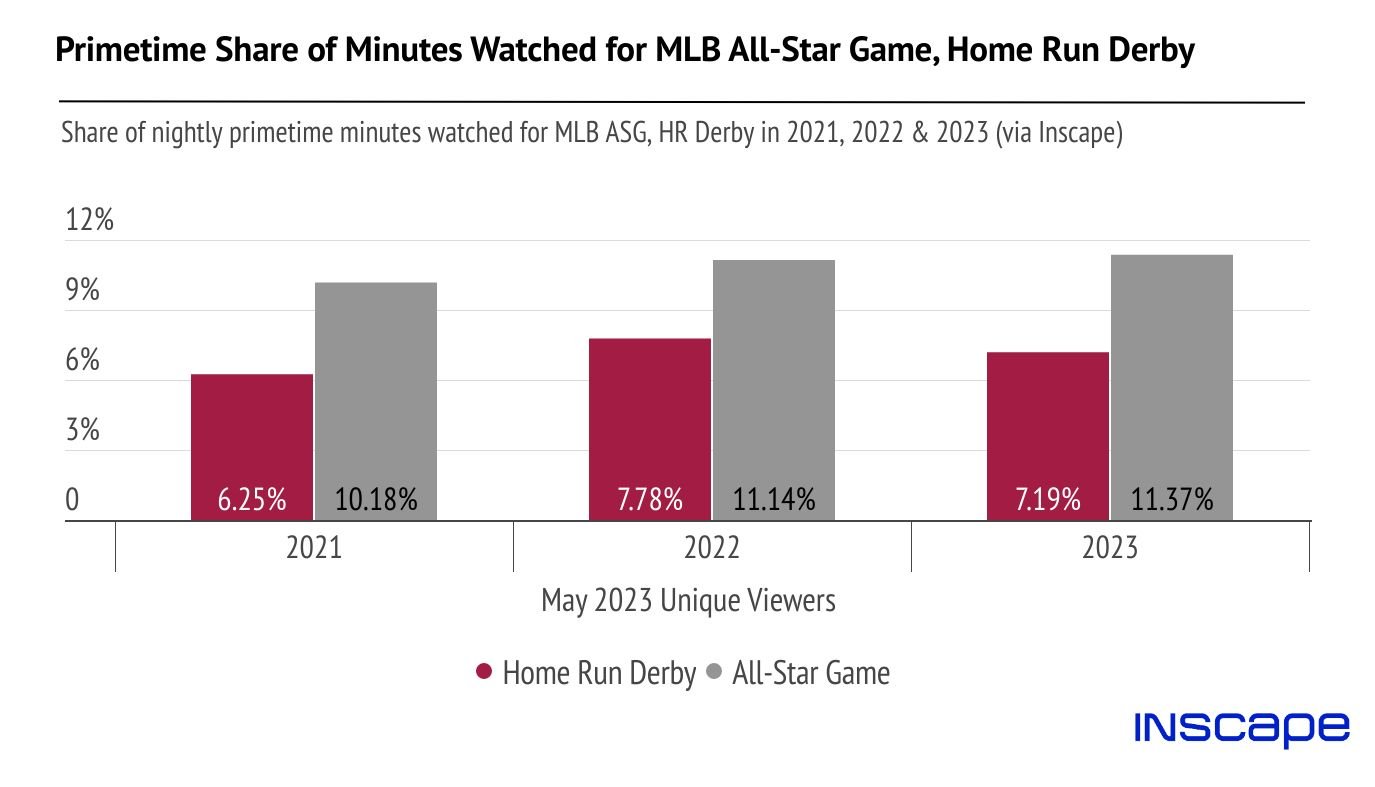MLB Wins With The Midsummer Classic
Even in light of the ongoing kerfuffle with Diamond Sports and its regional sports networks, Major League Baseball remains a TV stalwart — especially in summer, when it is the premier sports programming available (at least until preseason NFL action begins).
The MLB All-Star Game (or “midsummer classic” as it has long been referred to) is, of course, the peak of the league’s powers. All of its biggest stars in front of a national audience, participating in a fan-centric exhibition that still surpasses the impact of any other U.S. league. While at one point, the All-Star Game was a way for fans to get their only glimpses of a star player from across the country, the game now functions as a marketing vehicle for breakout names and a way to move past some of the sport’s regional silos.
And despite its many changes over the years around roster size, it’s still maintained a level of competitiveness that makes it a compelling and fun watch. This year’s was no different, as the National League won 3-2 over the American League following a two-run rally in the eighth inning.
The exciting contest picked up plenty of viewers as a result, too. Data from Inscape shows the All-Star Game was the No. 1 program in primetime on July 11, with 11.37% of national linear watch-time (nearly 2x the amount of the next programming, America’s Got Talent).
As you can see above, that was actually up slightly compared to last year’s game, which drew 11.14% of primetime minutes watched, and was up significantly vs. the 2021 game, with 10.18%. The consistent rise post-pandemic shows interest in the sport and the game itself appears to be growing. An influx of young stars (there were 33 first-time all-stars this year) helps too, as MLB continues to strive for more youthful audience.
That younger audience has typically been focused around the annual Home Run Derby, though tune-in hasn’t risen in the exact same way as the All-Star Game over the last three years. After netting 6.25% of watch-time in 2021, the Derby hit 7.78% last year and 7.19% this year. All of those figures were No. 1 fore their respective evenings. But it’s interesting to see the All-Star Game — which airs the night after — rise separate from the Derby.
With what looks like positive momentum for MLB, it’ll be interesting to see how all of this translates come the postseason. As big-spending big-market teams have struggled, the expanded playoffs could be lower on household names and more focused on small-market clubs. While that may sound concerning, it could also lend to larger followings for those smaller clubs, too. We’ll see soon enough if that comes to fruition this fall.


